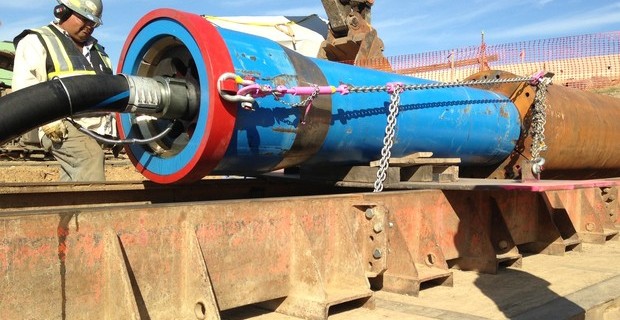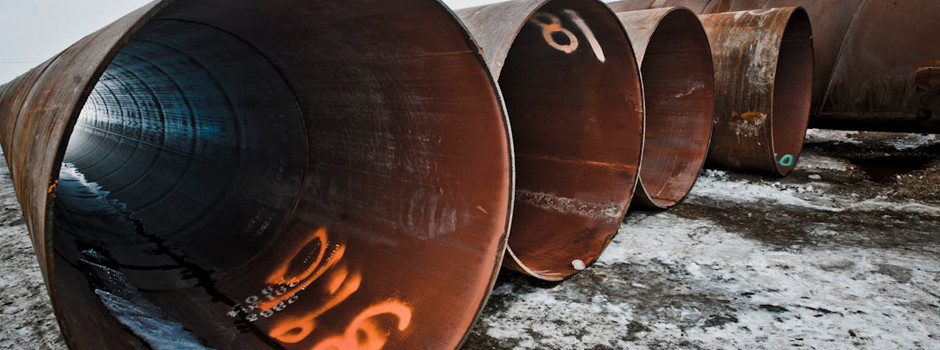
METHOD DESCRIPTION
This basic procedure uses a pneumatic pipe ramming system, powered by an air compressor, to drive a steel casing through the ground. This trenchless technology is used in combination with traditional case boring methods and equipment. In the launch pit, on the auger boring machine tracks, the pneumatic hammer is secured to the end of a steel casing using cotter segments, specifically sized to ensure maximum driving force is transferred. The leading end of the casing is left open so that the borehole is the same size as the steel casing, this allows for a large majority of the soil to remain in place. After casing installation is complete, or at specific intervals during the casing installation, spoil is removed in a number of different ways, either water washing, compressed air, or more commonly using conventional case boring equipment and auguring out the steel casing.
TYPICAL AREAS OF INSTALLATIONS: Roadway & Railway Crossings, Pipeline Right-of-Ways, Buried Utilities, Airport Runways
MAIN APPLICATIONS: Storm Culverts, Steel Sleeves into which utilities can be installed
SOIL CONDITIONS: Varies.
DIAMETER RANGE: Ranges from 150mm (6”) – 2425mm (96”).
DRIVE LENGTH: 12m (40’) – 150m (492’)
ACCURACY: Varies, however used in conjunction with the guided boring method installation can be achieved to within 25mm of design.
TRENCHLESS TECHNOLOGY SYNERGY: Used in tandem with the guided boring (GB) will result in superior grade and alignment accuracy.
